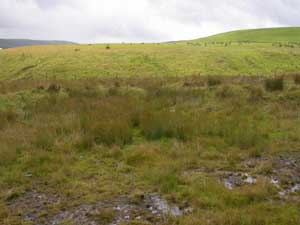Historic Landscape
Characterisation
Merthyr Tydfil
032 Cwm Bargoed Washery
HLCA 032 Cwm Bargoed Washery In use as a coal washery:
waste and lagoons; industrial remains: extractive (site of colliery and
pits, engine house and smithy; transport corridor: railway and tramroad
and associated features (site of station and signal box), site of water
management feature (reservoir), site of domestic structures (Railway Terrace)
Click here for a
character area map
Summary
A modern industrial area overlying the site of Cwm Bargoed Pit, and characterised by extensive waste tips and lagoons, with surviving rail features along its northern edge. Most other historic features in the area have been largely removed by continues industrial use.
Historical background
The historic landscape area of Cwm Bargoed Washery essentially comprises the site of the washery established during the later half of the 20th century with its extensive tips and lagoons. The washery has removed or buried most of the mining and transport remains, which previously stood in the area. Surviving features are largely associated with the Great Western & Rhymney Railways' Taff Bargoed Joint Line (c 1876), which ran eastwards to sidings at Fochriw Junction and westwards to the Dowlais Zigzag Lines Junction, part of the line remains in use as a mineral line for the washery. Other railways in the area included the former mineral branch of the LNWR (opened 1881, closed 1937) from Cwmbargoed Junction, between Dowlais Top and Dowlais, to Cwmbargoed and the Cwmbargoed Pits, and remains of various associated industrial tramways are located within the area.
The extraction of ironstone and coal in particular continued throughout the 19th century, fluctuating with economic demand. After the First World War, the extractive industries in the area entered a period of decline; by the end of the 1924, the Cwmbargoed Colliery, and most of the surviving mines had been closed.
